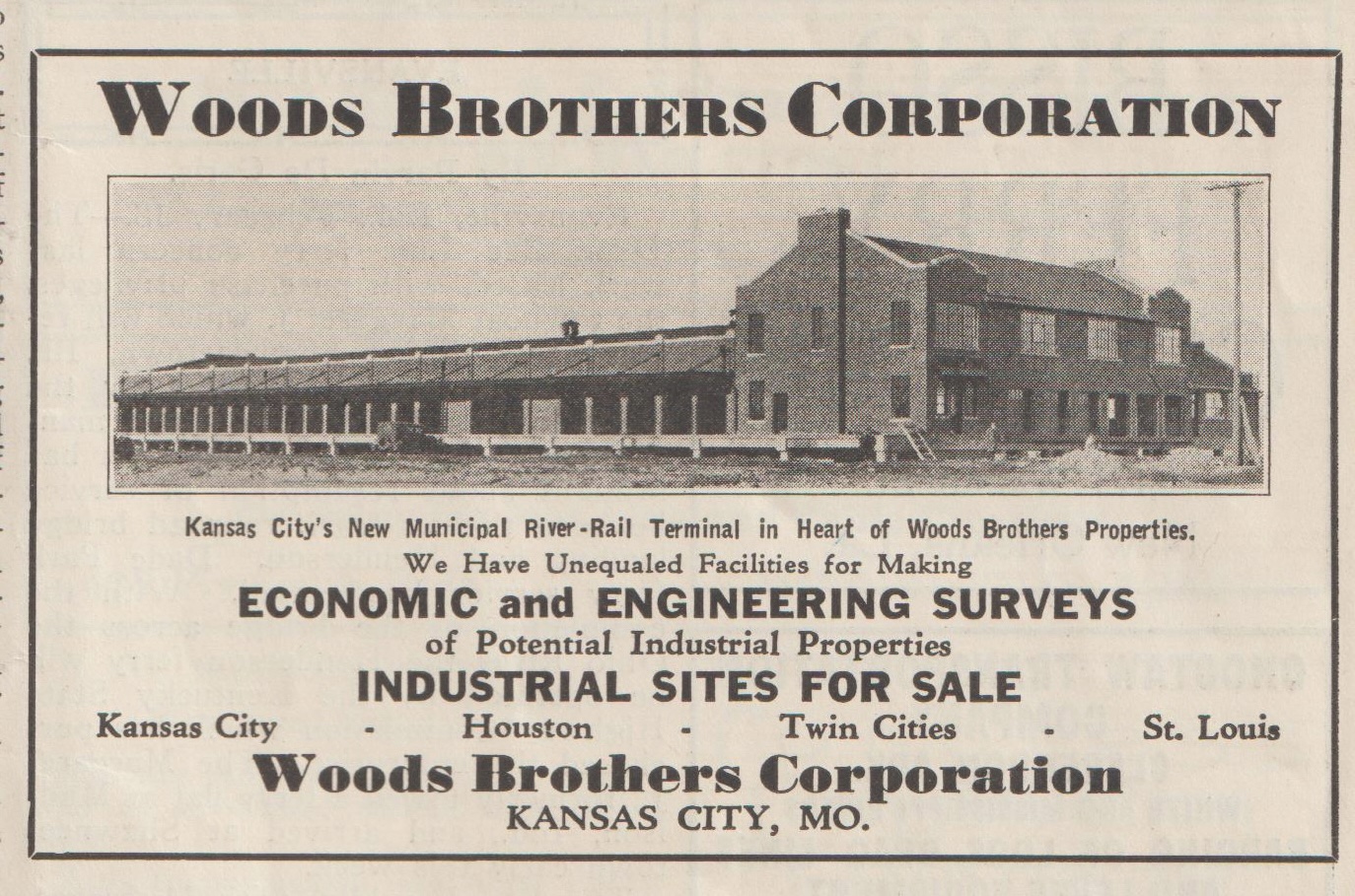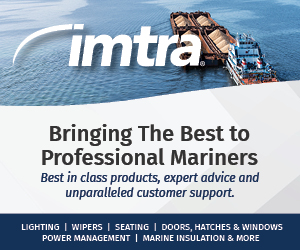When the federal government began efforts to revitalize the transportation of bulk goods on America’s river system in the 1920s, it was no small task, nor was it limited to certain rivers. All navigable rivers were included in the project, including the wild Missouri.
By 1930, efforts to tame the Missouri River and give it a reliable navigation channel were well underway. The Woods Brothers Corporation constructed a Municipal River-Rail Terminal just below the Kansas (Kaw) River, above Kansas City, Mo., at Mile 367. In June 1932, the steam sternwheel towboats Mark Twain and General Ashburn of the Inland Waterways Corporation (Federal) made a trial run from St. Louis to the new terminal (see The Waterways Journal, September 5, 2022).
By June 1935, the U.S. Army Corps of Engineers had made great inroads in creating a reliable channel, and Federal decided to initiate regular barge service from St. Louis to Kansas City. On June 14, 1935, the diesel prop Franklin D. Roosevelt arrived at Kansas City with the first tow of that service (See The Waterways Journal, March 20, 2023). In the ensuing years, traffic on the Missouri River increased, and the terminal below the mouth of the Kaw River prospered.
The Missouri River faced significant problems in the early 2000s. A long-lasting drought, coupled with targeted lawsuits by environmental groups, very nearly killed barge traffic on the stream. After 2007, the facility at Kansas City, now known as Midwest Terminal, lay dormant, as did most of the other docks on the Missouri River. With the exception of a few localized aggregate operations, one agriculture terminal at Mile 256 and the Ergon facilities at Kansas City and Wolcott, Kan., served by Magnolia Marine, there was no other commercial traffic on the Missouri.
In 2012, the Port of Kansas City, now known as Port KC, leased the Midwest Terminal property from the city. Stakeholders put forth a concerted effort to make the terminal viable again, and Richard Grenville was hired to direct the efforts. Grenville used his vast and varied maritime experience to begin methodically working toward that end.
Grenville is a native of England and comes from a naval family. From an early age, his interests turned toward the sea. He readily admits that he was a “handful for my mother,” and in 1966, as a teenager, he entered a boarding school that was a training ship where the cadets wore naval uniforms and were educated in the ways of the Royal Navy. The young Grenville decided through this experience that the Royal Navy was not for him, and he turned his sights to the British Merchant Navy.
He was in and out of the port of Savannah, Ga., several times and was quite familiar with the jute trade. Jute is used extensively in the backing material of carpet manufactured by mills in the southern United States. That experience led to an opportunity to work in Savannah as a stevedoring superintendent, and since he had wooed and won an American bride by this time, it was an attractive fit. He was there for some 20 years. Grenville later moved to Norfolk, Va., for a time before going back to Savannah and then to Tampa, Fla. After that, he started a consulting business, which resulted in his working with a Stanford University research institute to develop surveillance systems used to protect the U.S. Navy fleet following the attack on the USS Cole in the year 2000.
Grenville’s next adventure led him to the inland waterways when he worked a few years at the Port of Catoosa in Tulsa, Okla. From there, he came to the Port of Kansas City.
Upon arrival at Port KC, Grenville was faced with a forlorn terminal made up of ramshackle buildings, an open storage area going to weeds and a rotting wooden docking structure that dated to 1932. Between some well-worn sheet pile cells ran one usable dome structure suitable for salt or fertilizer storage. Compounding the problem of attracting tonnage to this “prized facility” was the fact that the river it was on had very little traffic.
The optimistic and upbeat Grenville got right to work. He talked to shippers, searching for a third party to operate the facility and working to upgrade the property through grants. He also began working to replace a rail spur into the terminal area that had been removed years earlier.
In addition, Grenville did not have tunnel vision in looking only at the Kansas City port property. He knew that, for the terminal to be truly successful, the Missouri River had to have more traffic. Thus, he helped as much as possible to find commodities for other areas on the river as well.
To the surprise of some who had effectively written the Missouri off as a dead river, the dock at Kansas City, then known as the Woodsweather Terminal, began receiving barges. Slowly but surely the tonnage grew. Most of the old buildings were torn down to make room for more on-ground storage. A second dome storage structure and better mooring structures were built, and eventually the rail spur was replaced, making the facility truly intermodal.
In October 2023, the Woodsweather Terminal was renamed the Governor Michael L. Parsons Port Terminal. Traffic and tonnage on the Missouri continues to increase. When Grenville came to Kansas City, there were only eight active docks on the waterway. Today, there are 21. As Grenville put it, looking at the Missouri “holistically and working with other facilities has led to a significant tonnage increase overall.”
After a career spanning some 54 years, Grenville, who now serves as vice president of multimodal logistics at Port KC, has decided to retire. A retirement celebration in his honor was held at the Port KC offices on November 6. Jon Stephens, president and CEO of Port KC, told those gathered for the event that “Richard leaves Port KC and the entire inland waterways in a better position” due to his efforts over the years. Chief of staff Jolene Mead presented Grenville with several gifts, including the traditional gold watch in the form of a beautiful pocket watch.
Maitland Mehlhaff, who first interned at Port KC, is the new multimodal logistics manager and said he “has been blessed to have had Richard as a mentor.” Mehlhaff is a native of the Kansas City area and said he looks forward to continuing interaction with river interests and agencies.
In his own remarks, Grenville stated that his tenure at Kansas City was one of the best parts of his career and that he always was humbled by the people he worked with.
“My success is your success,” he said.
Grenville and his wife, Lorraine, plan to travel but intend to continue making Kansas City their home.
Improvements are continuing at the Parsons Terminal, with plans in place to install a winch system at the dock to handle up to four barges without the need of a towboat standing by. Another ongoing project that Grenville was deeply involved in is the development of a new intermodal container rail terminal and river port at Mile 357.5 on the Missouri River. The new facility, to be located on a 415-acre site formerly occupied by Armco/AK Steel Corporation, will be called the Missouri River Terminal (MRT) and will offer access, not only to the river, but also to five Class I railroads and Interstate 435.



